Our client was a bushwalker who attended a state recreational area which was a national park in northern New South Wales.
The national park was open to members of the public to access for all recreational purposes including bushwalking and accessing the beach areas.
Throughout the national park there were various bushwalking tracks including a track leading down to a beach and had built stairs to enable bushwalkers to safely walk down the sand dune to the beach.
Our client was walking down some stairs which had been built towards the beach. One of the stairs was broken and as a result our client slipped and fell to the ground sustaining a serious injury to her right arm. The stairs were partly covered in sand and the fact that the stair was broken was not an obvious risk to our client or other bushwalkers using the track.
Our client sued the state of nsw in negligence. Prior to our client’s injury a local residence had informed the national parks and wildlife service that the stairs were broken and was a hazard to beach users. The state of nsw had prior knowledge of the broken stairs and did not have them rectified until after our clients injury.
We sued the state of nsw in negligence for failing to warn our client, failing to corner of the steps when they knew or ought to have known that it was broken, failed to repair the steps in a timely fashion and failed to take reasonable precautions against any risk of harm to our client and all other bushwalkers using the stairs.
The state of nsw denied liability and negligence. A statement from the local resident who had warned the national parks and wildlife service was served as was an experts report which determined that the accident could have been prevented by closing the route taken by our client, removing the sign at the top of the track and directing pedestrians to safer routes further along the track and constructing the stairs so they remain above sand level with ventilation to allow drying (preventing accelerated timber decay). The defendant did not serve any expert evidence in reply.
Our client suffered quite a serious injury to her right wrist, right elbow and right shoulder and was certified as suffering from 35% permanent loss of efficient use of the right arm at or above the elbow as compared to a most extreme case of an arm injury.
The medical report and treatment reports addressed in details the nature and extent of the client’s injuries, including but not limited to her diagnosis, prognosis, and future treatment needs and the affect that her injuries and continuing disabilities will have upon her now and in the future.
The liability, medical, radiological, treatment and expert evidence which was served upon the defendant was quite detailed and resulted in the defendant agreeing to a settlement of the claim out of court. The client received a substantial award of damages in her favour due to the defendant causing her injuries, losses and damage from the accident.
The case is useful in establishing how the state of nsw can be liable in negligence for failing to act in the care, management and control of the national parks, especially when they had prior knowledge of a hidden trap that was not an obvious risk to bushwalkers, and subsequently causes them to suffer serious injury by failing to act in circumstances where they should have to avoid injury to all users of the national parks under its control.
CONCLUSION
If you are a member of the public or a bushwalker who is accessing the national parks for the purposes of bushwalking and access to beach areas and suffer an injury, you may be entitled to pursue a negligence claim against the national parks and wildlife service who had the care, management and control of the recreational area in which you were injured.
In this particular case our client was a member of the public who was using the national park area for the purposes of bushwalking and access to the beach areas when she slipped and fell as a result of a broken step but having being rectified. The stairs were partly covered in sand and the fact that the stair was broken was not an obvious risk to our client. The defendant had prior knowledge of the broken stairs and did not act accordingly.
If you have suffered serious injuries and disabilities as a result of a slip and fall or an accident in a national park, you may be entitled to receive an award for compensation as a result of establishing negligence against the national parks and wildlife service, particularly in circumstances where they knew or ought to have known or had prior knowledge of a risk of harm that eventuated and caused you serious injury, loss and damage.
For a free no obligation consultation, please contact us on our toll free number, 1800 004 878 so that an appointment can be arranged for you to attend to protect your legal rights in the matter.

